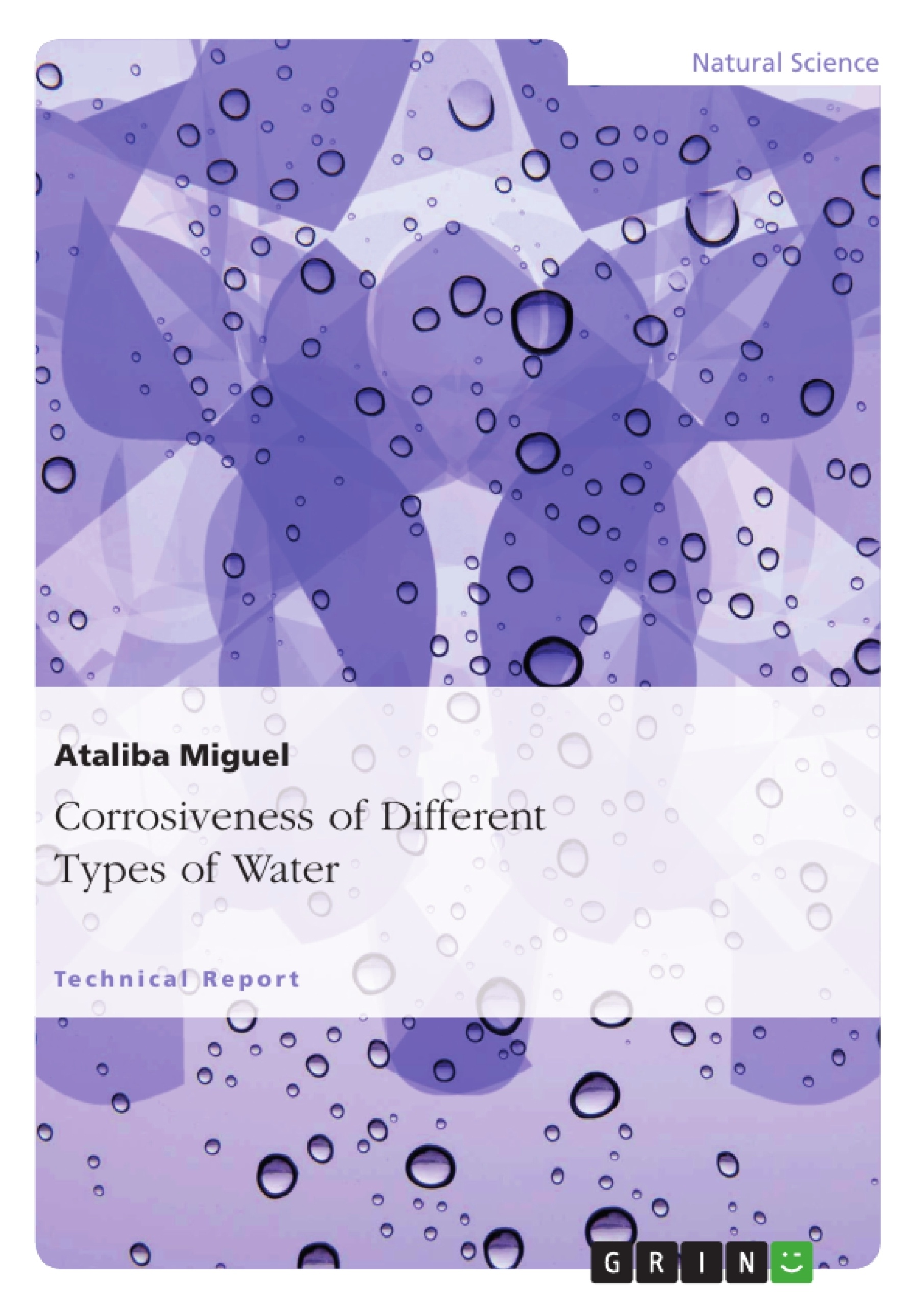The corrosiveness of three different types of water was analysed through an experiment carried out with iron nails immersed in a bath for a period of 25 days. The types of water used during the experiment were respectively synthetic seawater, mineral water and sparkling water. The iron nails immersed in a bath of both synthetic seawater and mineral water suffered a corrosive attack characterized by the formation of reddish brown flakes which have adhered the surface of the iron nails. Whilst, on the other experiment, the iron nail immersed in the sparkling water suffered a very minimal corrosive attack owing to the formation of a protective layer which prevented the underlying steel from further dissolution.
Inhaltsverzeichnis (Table of Contents)
- Introduction
- Objectives/Aims
- Methods
- Experiment Layout
- Synthetic Seawater - chemical composition
- Mineral Water - chemical composition
- CO2 Water - chemical composition
- Visual Observations
- Synthetic Seawater
- Mineral Water
- Mineral Water (CO₂ added)
- Discussion
- Corrosion of Iron
- Rust
- Temperature Effect
- pH Effect
- CO2 Dissolved in water
- CO2 corrosion mechanism
- pH Effect
- Temperature Effect
- Conclusion
Zielsetzung und Themenschwerpunkte (Objectives and Key Themes)
This technical report aims to analyze the corrosive properties of different water types on iron nails, comparing the effects of synthetic seawater, mineral water, and sparkling water. The experiment involved immersing iron nails in these solutions for a period of 25 days, observing the corrosion process visually and measuring pH levels over time.
- Corrosion of Iron in Different Water Environments
- Influence of Chemical Composition on Corrosion Rate
- The Role of pH and Temperature in Corrosion Processes
- Comparison of Corrosion Rates in Seawater, Mineral Water, and Sparkling Water
- Analysis of the Protective Layer Formation and its Impact on Corrosion
Zusammenfassung der Kapitel (Chapter Summaries)
The report begins with an introduction outlining the objectives and methodology of the experiment. It describes the preparation of the iron nails, the three types of water used, and the experimental setup. The report details the visual observations made throughout the experiment, documenting the corrosion process in each water type, including the formation of rust and other visual changes.
The report then delves into a discussion of the observed corrosion phenomena, exploring the underlying chemical processes involved. It examines the influence of factors such as pH, temperature, and the presence of dissolved gases on the corrosion rates of iron in each water type. The chapter further discusses the formation of protective layers and their role in mitigating corrosion.
Schlüsselwörter (Keywords)
This report focuses on the corrosion of iron in different water environments, analyzing the effects of synthetic seawater, mineral water, and sparkling water. It investigates the role of key factors like pH, temperature, and dissolved CO2 in influencing corrosion processes. The report examines the formation of rust and protective layers as key indicators of corrosion severity, providing valuable insights into the underlying chemical mechanisms.
- Citar trabajo
- Ataliba Miguel (Autor), 2013, Corrosiveness of Different Types of Water, Múnich, GRIN Verlag, https://www.grin.com/document/269623



